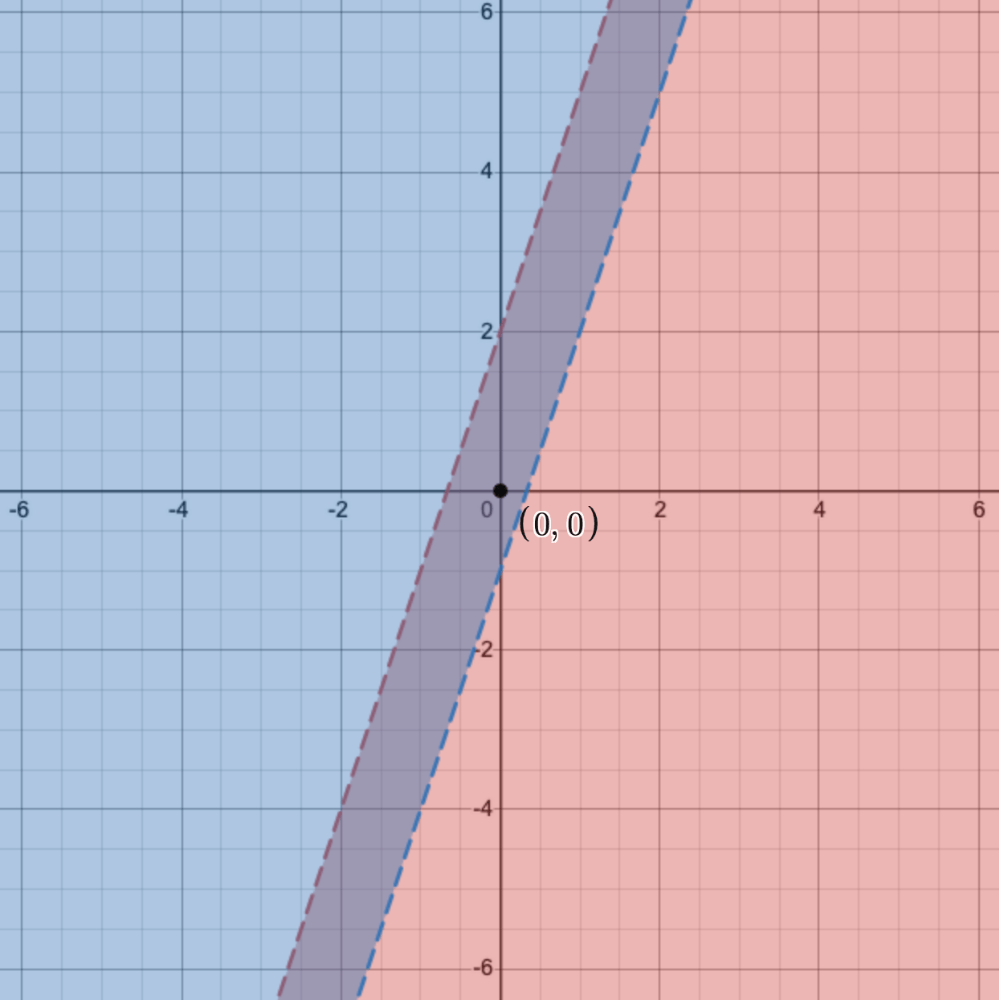Find the solutions of each equation for x = -3, 0, 2
y= x+5
(-3, 2), (0, 5), (2, 7)
Find the slope of the line
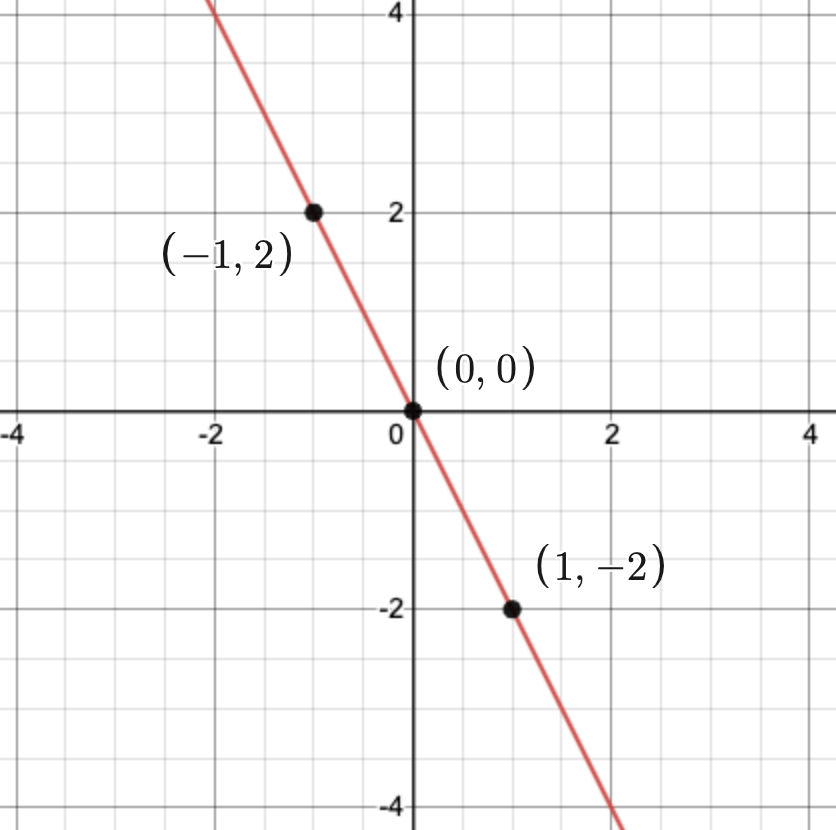
Slope = (y_2-y_1)/(x_2-x_1)
Slope = (rise)/(run)
Slope = -2
Solve each system of equations by graphing
y=1/2x-3
y=-1/2 x+1
(4, -1)
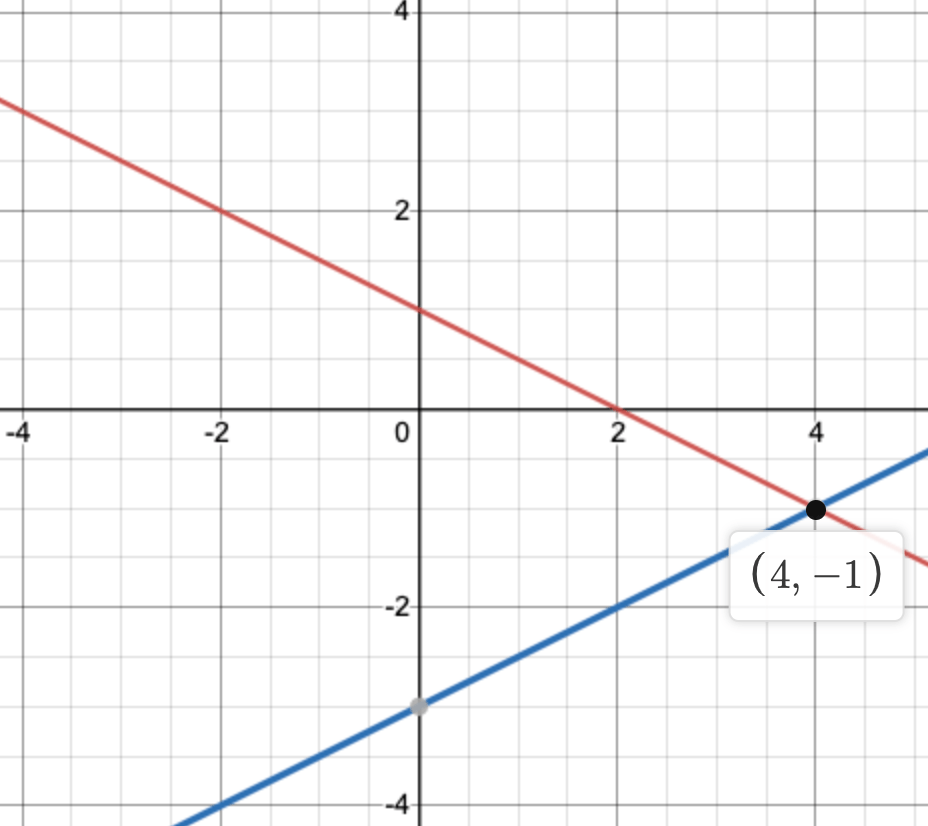
Is (0, 0) a solution to the following inequality? Explain your answer.
y>2x+5
No, (0, 0) does not fall within within the shaded region of the inequality, meaning it is not a solution.
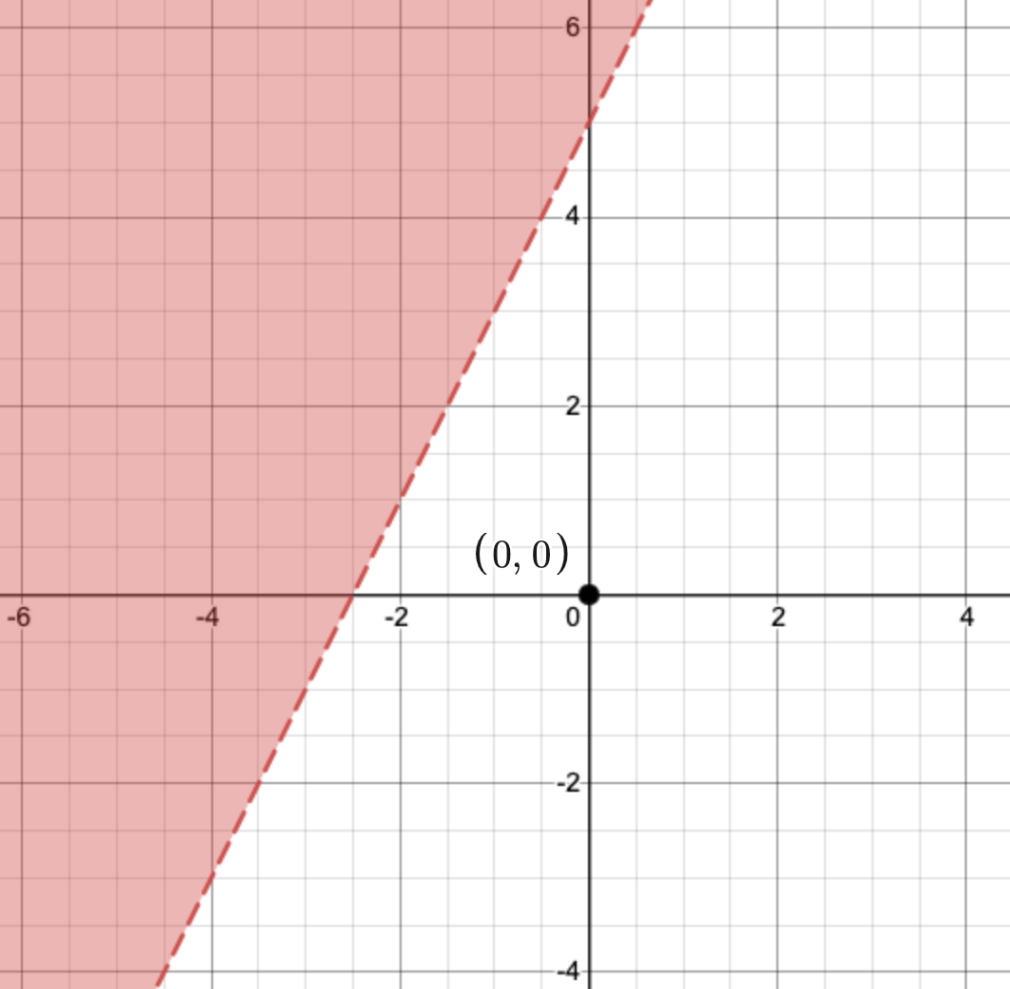
Find the solutions of each equation for x = -3, 0, 2
y= -4x
(-3, 12), (0, 0), (2, -8)
Find the slope of the line
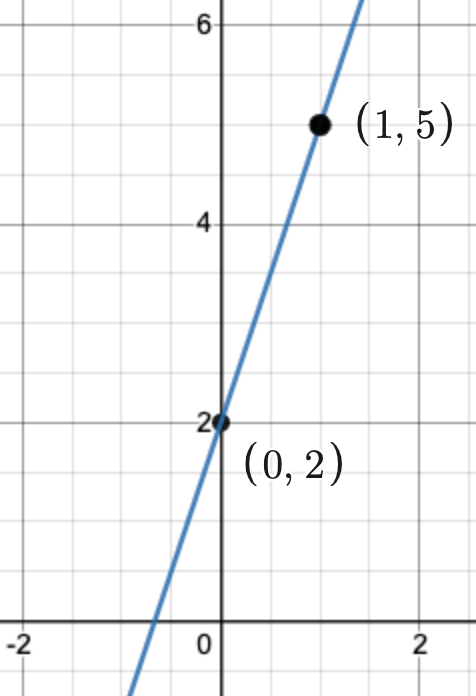
Slope = (y_2-y_1)/(x_2-x_1)
Slope = (rise)/(run)
Slope = 3
Solve each system of equations by graphing
y=x-5
y=-2x+1
(2, -3)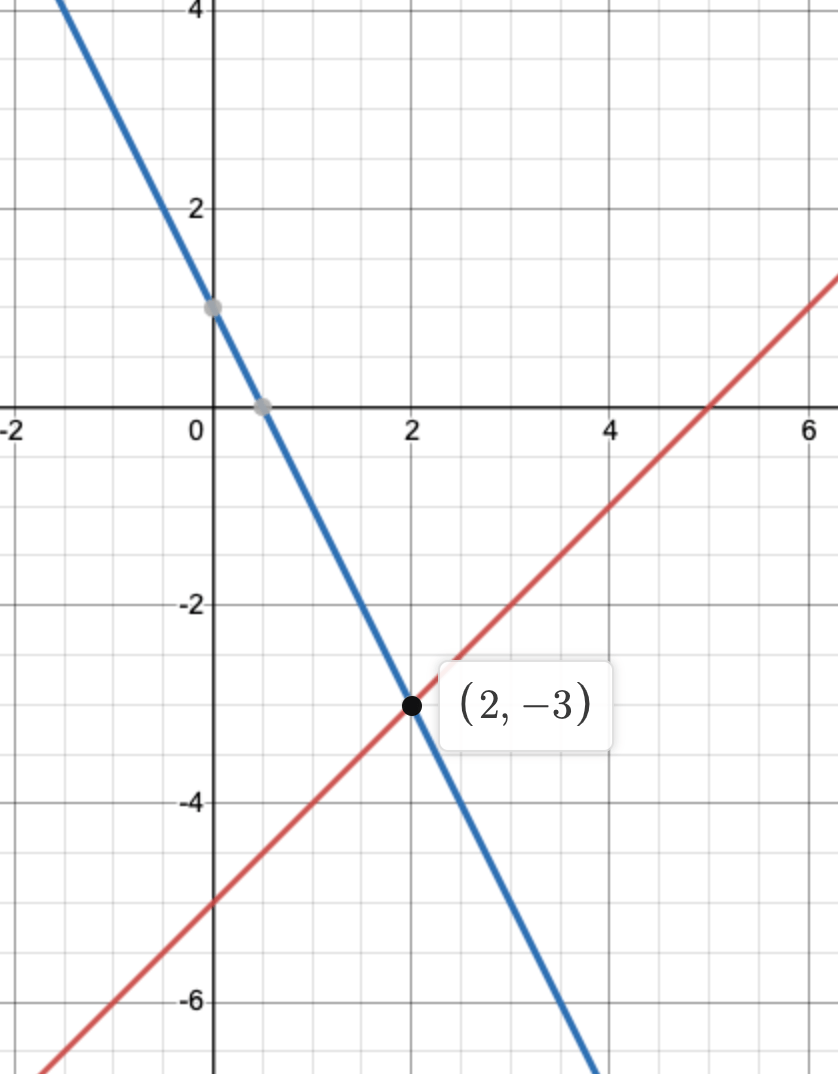
Is (0, 0) a solution to the following inequality? Explain your answer.
y<=-x+1
Yes, (0, 0) falls within the shaded region of the inequality, meaning it is a solution.
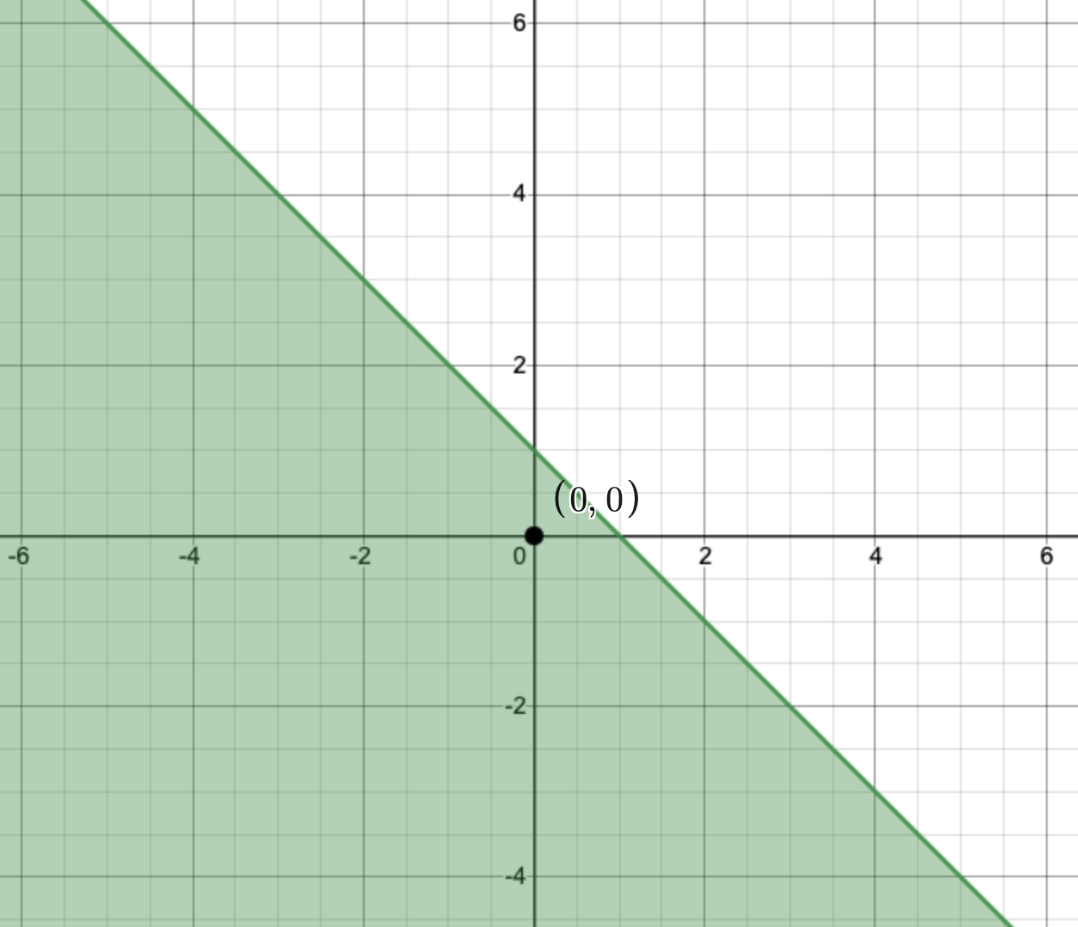
Find the solutions of each equation for x = -3, 0, 2
y=1/2 x+3
(3, 1 1/2), (0, 3), (2, 4)
Find the slope and y-intercept of the line
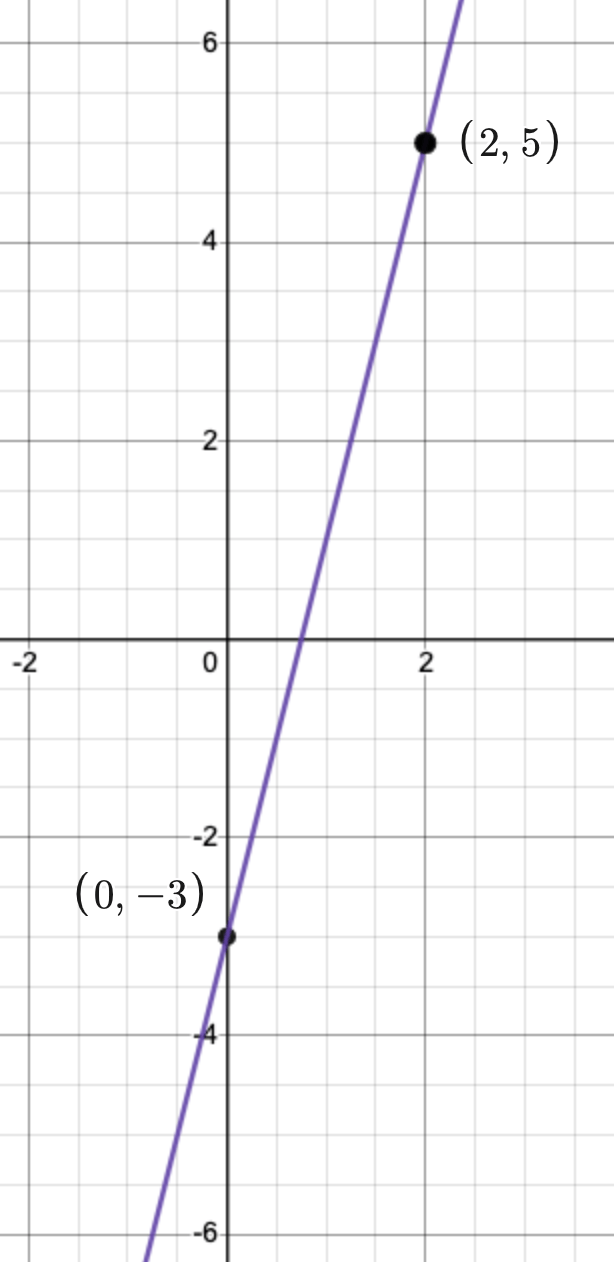
Slope = (y_2-y_1)/(x_2-x_1)
Slope = (rise)/(run)
Slope = 4
y-intercept = -3
Solve each system of equations by graphing
x+4=y
y=5x
(1, 5)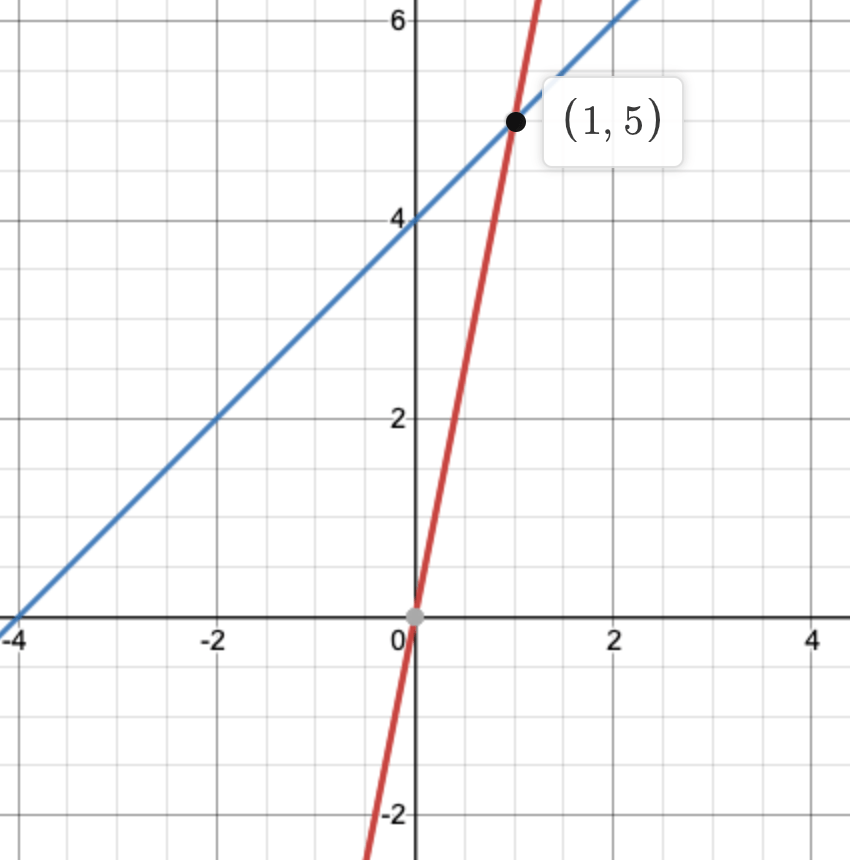
Is (0, 0) a solution to the following inequality? Explain your answer.
y>=1/2 x-3
Yes, (0, 0) falls within the shaded region of the inequality, meaning it is a solution.
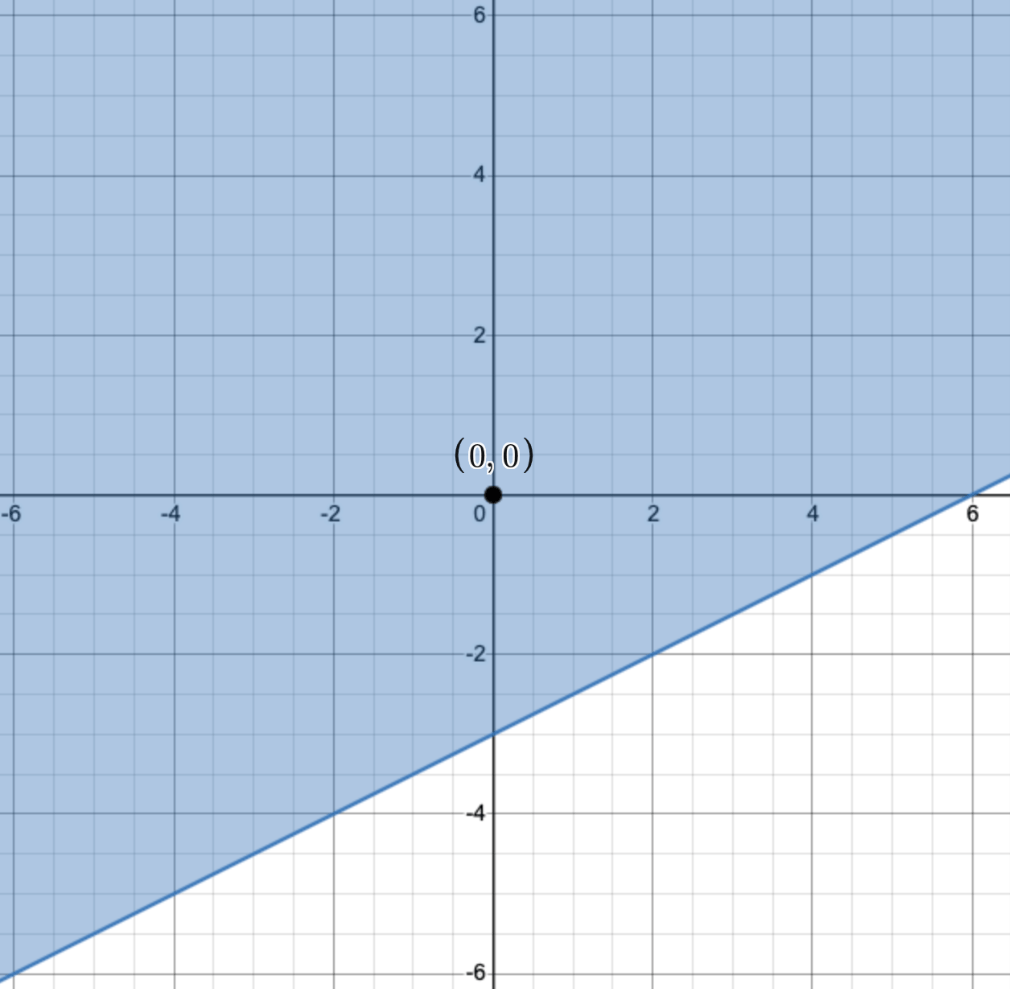
Find the solutions of each equation for x = -3, 0, 2
y= 6-2x
(-3, 12), (0, 6), (2, 2)
Find the slope and y-intercept of the line.
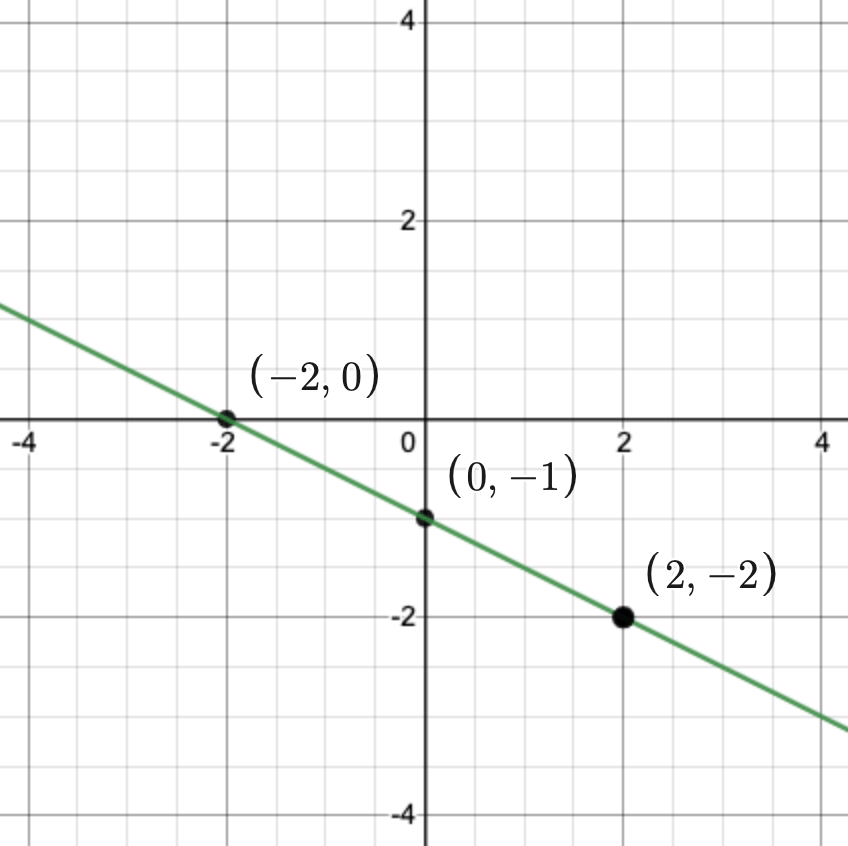
Slope = (y_2-y_1)/(x_2-x_1)
Slope = (rise)/(run)
Slope = -1/2
y-intercept = -1
Solve each system of equations by graphing
3x+2y=6
x+4y=-8
(4, -3)
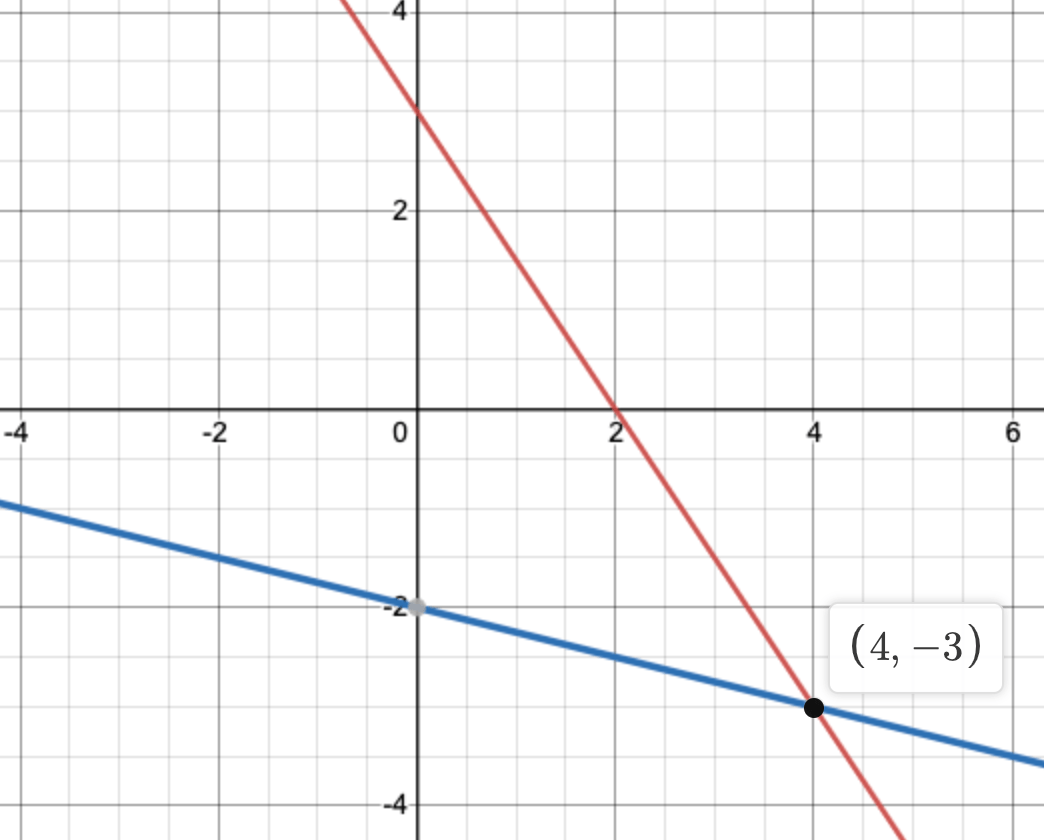
Is (0, 0) a solution to the following system of inequalities? Explain your answer.
y<3x+2
y>3x-1
Yes, (0, 0) falls within the shaded region of both inequalities, meaning it is a solution.
